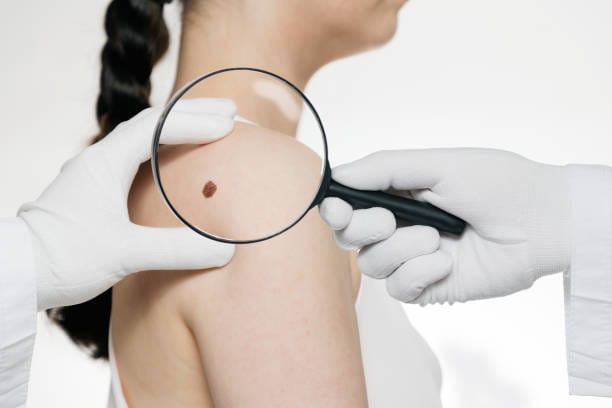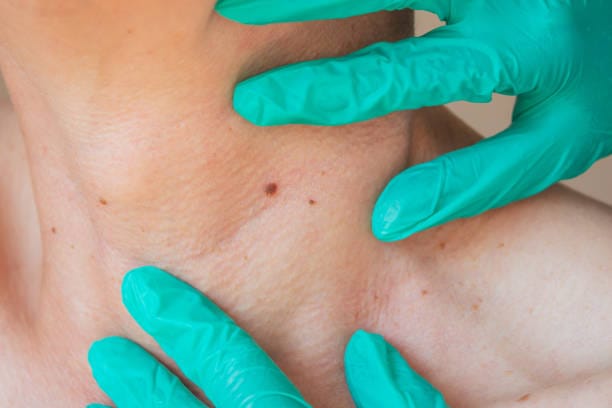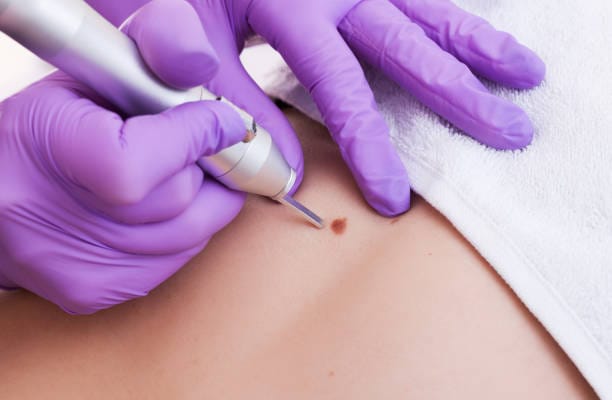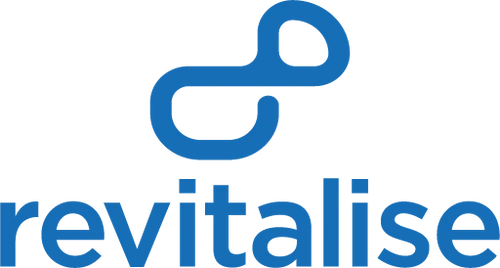
Moles are normally distributed on the body surface of many people, but sometimes they will become itchy or affect our appearance. Moles can be more than just a disturbance, and for whatever reason you find yourself in need of it, mole removal treatment can come to your rescue. In this guide, we will look at the different mole removal treatments that are available, their advantages, the time it takes to heal, and why we are the best in London at revitalise London for clearer and healthier skin.
Same Day Mole Removal Treatment
Mole removal is the removal of moles from the skin through the use of several types of treatments. Moles may be smooth or elevated, pigmented or non-pigmented, and they can be formed for genetic or environmental factors or no apparent reason. Most of the moles on the skin are harmless; however, some may be the symptoms of skin diseases including melanoma, which is why it is recommended to consult a dermatologist for the removal of moles.
Today there are various methods of mole removal, from very gentle laser treatment to more aggressive surgeries like excision. The mole removal treatments vary with the size, the position and kind of mole that you have; your skin type, and even your personal choice.
For individuals who want an alternative to Procedure, laser procedures are very effective in that they focus on the pigment of the mole and once it is destroyed, the mole disappears. Moderate larger or more invasive moles may need Treatments removal where the mole is shaved off and the skin is stitched up. Another way to remove a mole is cryotherapy in which the mole is frozen off using liquid nitrogen.
Even though most moles are harmless, some of them may be dangerous. You should consult a doctor if there is any change in the size, shape, or color of the moles that you have. Once your dermatologist has assessed your condition, he or she will be in a position to recommend the most appropriate measure to take and mole removal treatment will help to give your skin back its normal look.
Techniques of Mole Removal Treatment
The most effective method of mole removal depends on several factors such as the size of the mole, the area in which the mole is located as well as the type of mole, whether it is cancerous or benign. Below are some of the most common methods used by professionals:
1. Laser Mole Removal
Laser Procedure is considered to be the most common procedure to remove moles without having to make incisions on the skin. In this method, a high-intensity light is directed to the pigment of the mole which leads to fragmentation of the pigment and consequently, the mole disappears. Because the skin around the treatment area remains undisturbed, healing is fast and the chance of scarring is low. Laser mole removal is most suitable for small flat painful moles especially if they are on the face. This is an excellent option for any person in search of a fast, with little to no downtime treatment.
2. Treatments Excision
Treatments excision is done for larger or deeper moles or when the mole is Suspected to be cancerous or precancerous. In the process, the dermatologist will use a scalpel to remove the mole and stitch the wound up. This kind of treatment may cause a slight scar, but the mole will be eliminated permanently and effectively. It is a very good choice for large or potentially cancerous moles as it enables the removal of the mole and taking a piece of it for an analysis, called biopsy. If the wound is taken care of well, the scar tends to disappear with time.
3. Cryotherapy (Freezing)
Cryotherapy is where the mole is treated with liquid nitrogen to freeze it, and it dies and then falls off. This method is normally done for small moles on parts of the body and is quite fast and uncomplicated. Cryotherapy does not involve discomfort which makes it suitable for use in patients with small, non-cancerous moles. But there may be some redness, puffiness,s or crusts, which are normally only present for a day or two.
4. Shave Excision
Shave excision is when the mole is cut off using a blade without having to make an incision deep into the skin. It is common for the excision of raised moles or small moles that are not too deep in the skin. The recovery period is shorter, however, there is a risk that the mole will regrow if it isn’t wholly excised. Shave excision is faster than Treatments excision but may result in a small, flat scar.
5. ElectroProcedure
In electroProcedure, the mole is burnt off by using an electric current which is most useful in removing small, flat, and benign moles. The procedure is fairly fast and causes little discomfort and is sometimes used in areas such as the face. Although it is used to address the issue of moles, it may cause some marks on the skin but they normally heal within a short period.
All of the methods of mole removal treatment listed above have advantages and disadvantages. A dermatologist will evaluate the features of the mole and advise on the most suitable treatment for removal depending on the type, size, and position of the mole that you want to be removed say the expert at Brookdale Skin and Laser clinic.
What to Expect Before Your Mole Removal Treatment
Preparation is important to get the best results from a mole removal treatment before going through the process. Here’s a step-by-step guide to help you prepare:

1. Schedule a Consultation
The first and foremost is to make an appointment with a dermatologist or a skin specialist. At this stage, your dermatologist will examine the moles you want to be removed and consider their dimensions, as well as their shape and other features. They will also assess your medical suitability for the procedure to be done on you. If there’s any suspicion that a mole might be cancerous or require further investigation, your dermatologist may recommend a biopsy before proceeding with the mole removal treatment. This is crucial so that you can get the best care for your skin as possible.
2. Discuss Mole Removal Treatment Options
After your dermatologist examines the mole, he or she will recommend the most appropriate course of action. The treatment options for mole removal may differ in aspects such as the position of the mole, size, and the type of mole. It is necessary to know the procedure that is recommended to you in detail. These may include; the level of pain you should expect during treatment, the time it will take to heal, and the possible complications of the treatment. It is also important at this time to review your own needs and desires so the treatment will address your specific needs. It’s important to know how the procedure works because it will prepare your mind for it.
3. Avoid Sun Exposure
Preparation for the mole removal treatment is quite straightforward and you should avoid exposing the area to direct sunlight in the weeks preceding the procedure if the mole is located in a tanned area of the body. Likely, it is important not to expose the treated area to the sun and avoid such side effects as scarring or pigment changes. To prevent the skin there from burning, use a broad-spectrum sunscreen that has a high sun protection factor (SPF) whenever you venture out into the sun, and cover up the area with clothing, a hat, or other accessory. The following measures can be taken to guarantee the best outcome and reduce the time needed for the recovery.
4. Pre-Treatment Instructions
Your dermatologist will most probably give you particular guidelines before the procedure of mole removal. Such instructions may range from refraining from taking some medications such as blood thinners or NSAIDs that can lead to post-procedure bleeding. Please, consider the following guidelines to avoid the worst side effects and make your treatment as effective as possible. You may also be told not to drink alcohol for some days before your treatment because it interferes with blood clotting.
5. Prepare for Aftercare
Aftercare is essential to get the best possible outcome from having your mole removed. Before your procedure, it is recommended to ensure you have an adequate supply of items such as sterile bandages, anti-bacterial ointments, and any pain medication that may have been prescribed. These measures will help to prepare you for the care of the treated area as soon as you are back at home. It is therefore important to follow aftercare instructions to reduce and prevent scarring and to speed up the healing process.
To get ready for your mole removal treatment, you can minimize the risk of getting complications during the Procedure and hasten your recovery period. It will be important to always listen to your dermatologist to ensure that you get the best results.
The Recovery Process and Tips to Follow After
There are several things that one should do after having a mole removed to make sure that the area heals well, gets less scarring as well, and prevents any adverse effects. Here are some essential recovery tips to help you heal effectively:
1. Keep the Area Clean and Dry
There are no special instructions for aftercare of the treated area; simply keep it clean and dry. Clean it with a mild soap and warm water only. Do not use scrub or other chemicals that may harm the healing skin during the process. Usually, it is recommended to rub the area gently with a clean towel.
2. Apply Recommended Ointments
Your dermatologist may prescribe topical antibiotics or other topical medication to avoid Disease and to speed up the healing process. Make sure that you read the package guidelines of when and how to use these products.
3. Avoid Scratching or Picking
It is possible that after the treatment your skin may form a scab over the treated area as it heals. Another important thing is not to scratch the scab or pick at it with our fingers because it may lead to a scar or Disease. It is advised that it should be left to heal itself.
4. Use Sunscreen
After the area has healed, use sunscreen with at least SPF30 on the area you had treated when you are exposed to the sun. This protects the healing skin from the sun’s rays and minimizes the chances of the skin producing melanin thereby darkening.
5. Monitor for Disease
Watch the skin for any signs of Disease including redness, heat, edema, or pus production. If you experience any of these symptoms then it is recommended to see your dermatologist for more examination.
6. Avoid Heavy Exercise
After the first procedure do not engage in activities that will make you sweat a lot or put pressure on the area that was treated for the first few days. This helps the skin to heal with no further inflammation.
Following these aftercare instructions should help promote good healing of the mole removal area and leave you with clear skin.
Mole Removal Treatment: The Hazards and Complications
Mole removal treatments are usually safe but some complications and side effects may occur. Knowing these risks can assist you in deciding on your treatment.
1. Scarring
The most frequent complication of mole removal treatment is the formation of a scar. All the treatments that are used for the mole removal treatment, such as excision and laser therapies, will lead to scarring. The size of the scar will depend on the size and depth of the mole as well as the type of treatment that has been administered. However, appropriate care and sometimes normally helps to minimize the visibility of scars.
2. Disease
There are very few side effects but sometimes Diseases may happen if the treated area is not taken good care of. The symptoms of Disease are redness, swelling, or discharge of pus. If you have any of these symptoms, it is advised to visit your dermatologist as soon as possible.
3. Pigment Changes
After mole removal treatment, the skin in the area where the mole was removed may look different than the rest of the skin. This pigment change is generally reversible; it subsides after some time. However, sun exposure during recovery leads to darkening of the skin, which is irreversible, so the area should be protected from the sun.
4. Regrowth of the Mole
Sometimes the mole may reappear, maybe if it was not fully excised. This is more so with treatments like Shave excision for instance. Prevention of regrowth is best done by closely following the recommendations given by your dermatologist and you should also make sure that you follow up on the appointments for checkups on the removed mole.
5. Allergic Reactions
Although the side effects are uncommon, one may develop an allergic reaction to topical anesthetics or ointments. If you experience redness, itching, or pain in the area where you have been treated, contact your dermatologist to alter your treatment regimen
revitalise London as your Mole Removal Treatment:
It is for this reason that one must get to select the right clinic for mole removal treatment. At revitalise London, We offer the safest, most effective, and most tailored mole removal services. Here’s why we’re the best choice for your mole removal treatment needs:

1. Expert Dermatologists For Mole Removal Treatment
Our dermatologists have a lot of experience in the various procedures that may be used in the mole removal treatment and therefore will advise you on the most suitable one depending on your circumstances. Having years of experience, we implement only safe practices and provide the most desirable outcomes.
2. Advanced Technology For Mole Removal Treatment
Mole removal treatments at revitalise London are done using the highest level of technology to ensure they are done to the correct standard. From laser therapy to excision, or cryotherapy, we have the most advanced technology that guarantees safe and efficient removal with less downtime.
3. Mole Removal Treatment With Personalized Care
Personal attention is our goal at our facility. Every time you visit our clinic for consultation we listen to your concerns and advise you on the best method to remove the mole from your skin. We focus on the customer’s comfort and satisfaction.
4. Aftercare Support
We do not only stop at the procedure. revitalise London has detailed aftercare services which include step-by-step guidelines on how to recover and follow-up appointments. Our team is here to help and assist you in any way; we aim to achieve the best results for your skin during the healing process.
5. Convenient Location
Located in the heart of London, our clinic is easily accessible to all our clients from the UK and beyond. To ensure that you do not miss our services we have come up with a flexible appointment schedule.
6. Trustworthy Reputation
Here at revitalise London, we have had a chance to work with many clients. That is why we are one of the best choices for mole removal treatments – we always focus on safety, stay professional, and achieve excellent results.
Conclusion For Mole Removal Treatment
If you are prepared to get rid of unwanted moles and gain more even skin, then mole removal treatments are your best bet. Moles are not something that one has to live with, with the right treatment you will be able to have perfect skin.
To stop the growth of these moles and have a more youthful and even complexion, then you need the mole removal treatment. According to dermatologists, you can get rid of those unwanted moles on your skin and achieve perfect skin without any hassle.
revitalise London understands that everyone is different and therefore, guarantees to offer you quality and safe mole removal solutions that suit you. No matter whether you opt for laser treatments, Treatments excision, or cryotherapy, our qualified dermatologists will do their best to help you.
Our clinic is not only concerned with excellent outcomes but also with the patient’s comfort during the procedure. Using state-of-the-art, professional personnel, and great customer service you can be assured of receiving the best mole removal services.
Get rid of moles on your skin and regain your confidence. Contact revitalise London for a consultation today and start on the path to beautiful, healthy skin. It could be for the enhancement of the face appearance or medical reasons, we will assist you in attaining your skin needs through our quality services.
